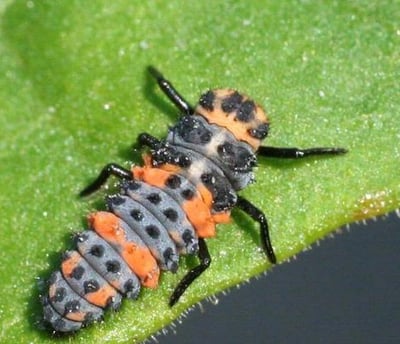Ladybugs
One of our favorite beneficial bugs...
13 plants...
3 min read


Many grower’s first foray into using beneficial bugs for pest management involves ladybugs. I remember struggling with a spider mite infestation and throwing many thousands of ladybugs at the grow. The spider mites were unphased. The dead ladybugs collecting in my tent were a testament to how ineffective this approach turned out to be.
As I moved my grows outside, primarily to deal with said infestation, ladybugs continued to be a piece of the pest management puzzle. However, the more I have learned, the less I have leaned on them.
Ladybugs aren’t the silver bullet many will lead you to believe. For them to be particularly effective, they need to be used preventatively. Even then, they come with a host of problems…
-Ladybugs and Asian Lady Beetles look very similar, but are actually different species (hippodamia convergens vs. harmonia axyridis). Hippodamia convergens, also known as the convergent ladybug, is a species native to North America. Harmonia axyridis are an introduced species, but have been used extensively in commercial agriculture in North America for aphid control. They actually require an aphid diet to reproduce successfully. The biggest issue with the harmonia axyridis is that they hibernate (diapause) anywhere that’s convenient… and when introduced inside a home or permitted entry into a house, that’s a pretty convenient place to overwinter. They smell bad, especially when hundreds or thousands find their way into a corner of your home. For the rest of this article, we’ll be talking about hippodamia convergens specifically. Here is a quick ID guide.
-Ladybugs are harvested while in hibernation. That’s when they’re most easily collected at quantity, as they often pile into rock crevasses to enter their diapause. Many bugs (pests and beneficials) enter a diapause when conditions aren’t favorable for reproduction. Harvested ladybugs essentially “wake up” as they’re being introduced into your garden. In nature, they wake up far from their food sources, so the first thing they do is migrate away to go find food. Introduced into the garden, their instinct is to fly away to so seek out food sources.
-Ladybugs are solitary. When you buy yours from Nature’s Good Guys or Amazon, you’ll get a neat little bag with a few thousand ladybugs in it, eager to climb out and feast on all of those mites and aphids you’ve been cultivating. They pile on your plants, but they aren’t focused on those tasty little pests so much as they are stressed out because of the close quarters with a shit ton of competitor ladybugs. So they fly off to go find their own hunting grounds.
TIP: Introduce ladybugs singly or in smaller groups spread out in the garden to help keep them from migrating away due to competitive pressure from other ladybugs.
-Ladybugs from other localities can carry diseases that are easily spread to the local population.
-Ladybugs are generalist predators, eating a variety of small bugs, mold spores, nectar, and pollen to round out their diets. Without sufficient food sources, ladybugs will migrate or starve. While there are ladybug foods available for purchase, it is challenging to maintain a healthy population of ladybugs in an indoor grow. Things aren’t much better in many outdoor gardens surrounded by our typical desert of lawns. But that’s another story.
Ladybugs are great generalist predators. The fact that they eat mold spores in addition to mites and aphids only helps in the ongoing battle against fungus problems. While introducing them into the garden can be problematic and ineffective, attracting them is a very viable strategy.
The otherworldly ladybug larva is a voracious predator, and a welcome sight to any gardener who strives to maintain some level of ecosystem in their space. The presence of ladybug larva can be a great gauge of your garden’s overall health.
How do we attract ladybugs to our garden? Biodiversity, and specifically companion planting, is an excellent way to keep these little soldiers around. They like to eat pollen and small insects, so having some pollen-producing flowers around is a great idea. Umbellifers (plants that produce umbrella shaped clusters of tiny flowers) are a favorite for ladybugs. Parsley, fennel, dill, yarrow, and cilantro are worthy choices not only because of the pollen and nectar they produce… but because their tiny flowers are easy for tiny bugs to feed on. Our ladybug friends arrive to some bugs with a side of pollen, and they stick around.
Something else to consider when maintaining any beneficial insect population is pesticide use. Neem oil, Sevin dust, and pyrethrin will harm your ladybugs. Insecticidal soaps can be damaging to ladybug larva. In my garden, I use Grandevo and SNS 209 in foliar sprays to help keep pests in check without doing damage to beneficial bugs. There are MANY other options, maybe I’ll do an article around the overwhelming number of pesticides available at your local grow shop and how each one affects your garden’s inhabitants.
But for now, don’t buy ladybugs. Plant some companions instead.
